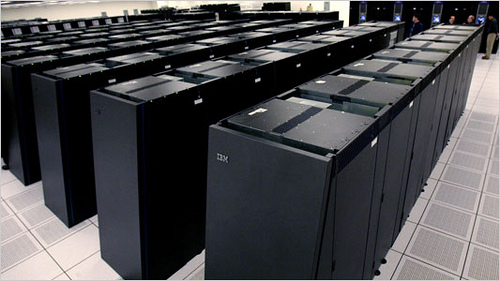|
The Blue Brain Project - Human Artificial Intelligence
Well, here is something that will keep you from sleeping at night, if you look at it the right way.
 |
| Magerit Supercomputer housed by Supercomputing and Visualization Center of Madrid (CeSViMa), Technical University of Madrid (UPM) |
What is the Blue Brain Project?
This project is part of an ongoing research taking place at several centers whose express goal is to create a simulation of the way a human mind works. The researchers believe that with the right mathematical tools and with a HUGE amount of computing power they can accurately simulate the way a human mind works, not only at the lower levels but they claim they will be able to produce an accurate simulation that can feel, talk and have a consciousness.
So, how does this thing really work? In simplified terms, every kind of information, thought and feeling the human (or actually, almost any kind) mind has is really a huge network of connections between neurons. When a mind learns something new, the knowledge manifests itself as a huge (millions if not more) network of new connections between our neurons. The human mind possesses some one hundred billion neurons, so you can imagine the amount of connections possible between them.
So, the Blue Brain project aims to eventually simulate mathematically the neural network the human mind contains. They will build if phase by phase, first trying it with smaller neural networks till they will finally, according to them in ten or so years, they will be able to enlarge their server farm, along with its software and simulation to have what essentially a real human mind.
So, if may be that in ten years human kind would have achieved its greatest triumph along with its greatest folly.
It would have created real artificial intelligence based on the human mind, with feelings and emotions and consciousness and thoughts of its own.
What do you think this artificial intelligence would do? What would you do in its stead?
More on the Blue Brain Artificial Intelligence on the following blog post.




No comments:
Post a Comment